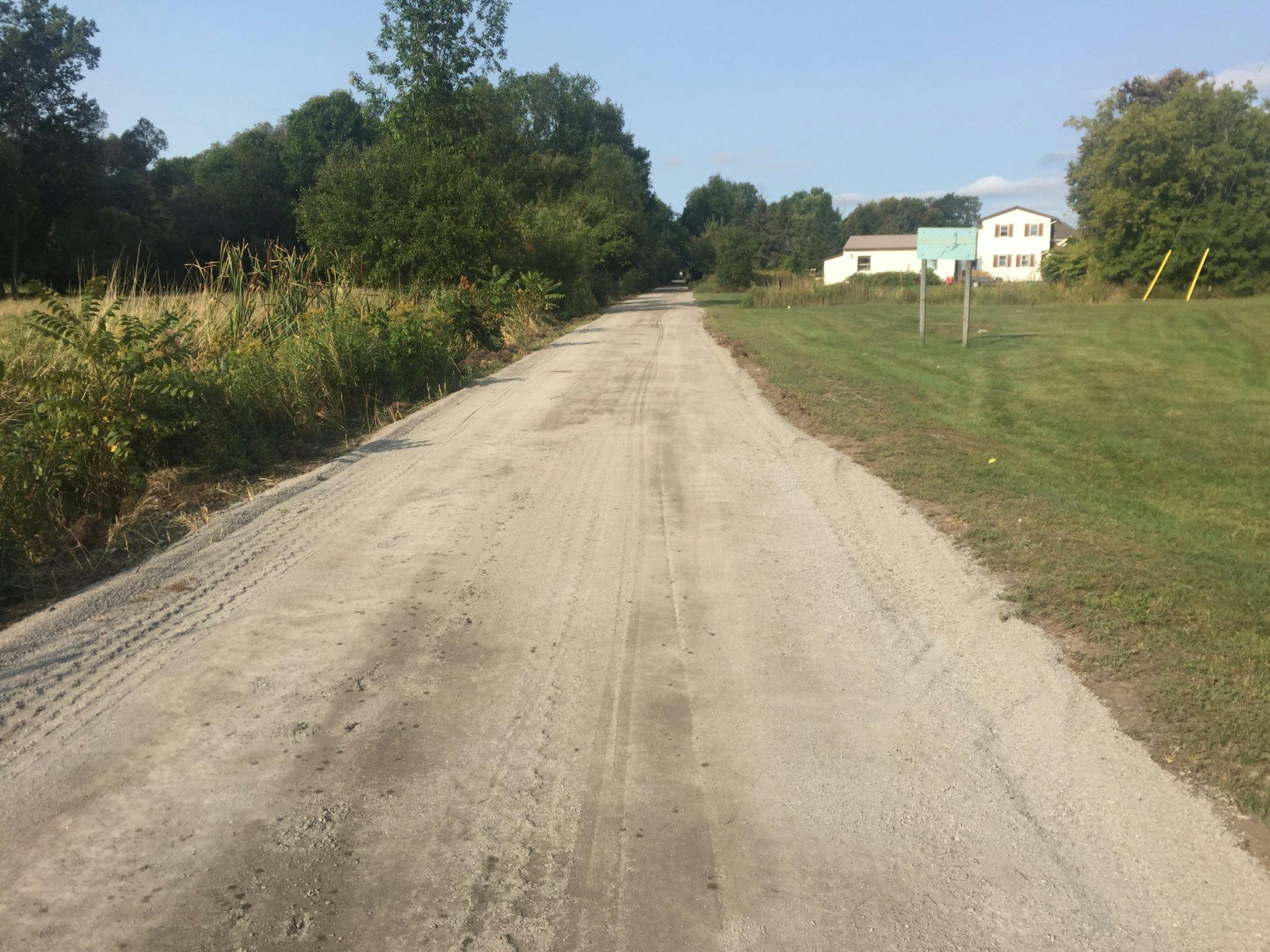 The Millennium Trail at Stanley Street looking west. (Jason Parks/Gazette File Photo)
The Millennium Trail at Stanley Street looking west. (Jason Parks/Gazette File Photo)
A new, larger intake pipe, a low carbon wastewater treatment process, and state of the art filtering technology for drinking water. Welcome to Wellington’s proposed new Water and Wastewater Treatment Plants, as unveiled at a Public Information Centre (PIC) held last week in the village.
Informing the discussion were Wellington’s ambitious plans for growth. No expansion, or development, can happen without essential services in place. “There is no point in Kaitlin (the group behind the planned Cork and Vine development for Wellington) starting to build until they have the trunk servicing,” said project manager Garrett Osborne.
According to the 2022 development charges background study, the permanent population in the County is expected to increase by 3500 to 29,637 in the next ten years.
David MacPherson, Manager of Engineering, said that there are enough planning applications in the pipeline to swell the population of Wellington from its current 2000 to 8000 people. Picton, too, has plans for major development and growth, including at least 5000 new units at Base31.
All of those applications need the infrastructure to support them before they can be approved.
Humming along in the background are plans to use Wellington water to service Bloomfield and Picton. A regional water study is currently underway to assess costs, best practices, and environmental impacts. Results should be made available in a further PIC in August.
According to Mr. MacPherson, the Wellington Water Treatment Plant will be purpose-built to be easily extendable as demand increases for water over the next three decades. It will provide service not only for planned development north of the village. It may also bring water to Picton and Bloomfield. The intake pipe alone is being expanded from its current treatable capacity of 14000 m3/day to 36000 m3/day.
Wellington is also constructing a new trunk watermain and sanitary sewer line to service land to be developed north of the Millennium Trail, a project to be funded by development charges. Those lines run, in part, East along the Millennium Trail to connect to the new water tower on Belleville St.
Mr. MacPherson suggested such trunk lines could also carry clean drinking water just a little further east along the Millennium Trail, through Bloomfield to Picton.
“No other municipality has anything like this,” he enthused, speaking about the possibilities presented by the Trail. “It’s not a road; you can easily dig underneath it, install your pipes, and then cover it all up. Easy. No asphalt to replace, and you have your trail again.”
Not to mention cold clean drinking water for Picton and Bloomfield.
Wellington has long been the envy of the County for water drawn from the deep, clear waters of Lake Ontario. Its intake pipe extends a full kilometer from the shore and draws water that needs minimal treatment to make it safe to drink.
The water treatment plant in Picton is close to 100 years old. It was built in 1928. Many of the pipes are lead, and so thickly encrusted inside it is difficult to get water through them. That limits capacity. The whole system needs to be replaced. Enter Wellington water. “It’s a great solution because there would only be the one water treatment plant, not two,” added Mr. Osborne.
It’s well known that the drinking water drawn from the harbour, the sole water source for about 7000 people across Picton and Bloomfield, is of poor quality. A history of intense industrial activity in and along the Bay, and multiple sources of contaminants in the shallow, sludgy waters, mean Picton’s drinking water needs a cocktail of chemicals to become drinkable.
The plans are expensive – current estimates sit at about a $100 million for Wellington’s new treatment plants, and perhaps half as much again to pipe drinking water to Picton. County Staff are convinced, however, that there is enough development afoot to get the municipality’s portion of such infrastructure costs paid, and to convince upper levels of government, provincial and federal, to pay their share.
The increased infrastructure could lead to greater density in residential development moving forward. Density, which makes for both more walkable and more affordable neighbourhoods, is the holy grail of urban planning. More houses per hectare also means more development charges. “We are looking at increasing density per hectare from what is required now,” said Mr. MacPherson. “We want to move toward mixed types of housing, condo apartments, townhouses, with no maintenance, what people who are retiring are looking for.”
See it in the newspaper